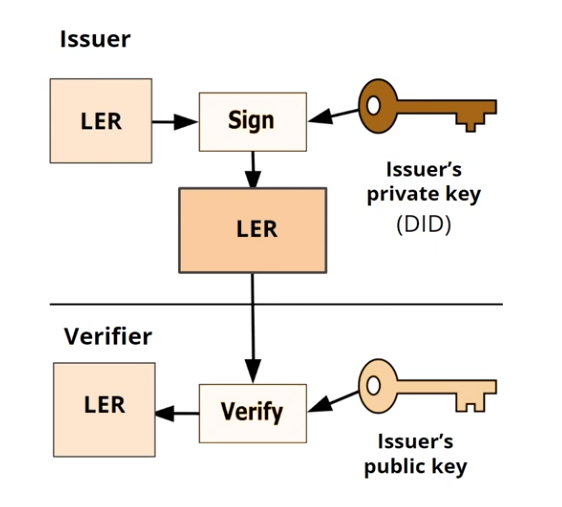Verifiable LERs 101: What they are and why they matter
Learner and employment records (LERs) are available in many forms — digital credentials, badges, certificates, micro-credentials and more. But what do all these terms mean? Are we all using the same definitions to describe them?
While some people might use these terms interchangeably, they all mean very different things. And one challenge facing the digital credential ecosystem is that there is no single source of trust for how these terms are defined.
So, to keep building the momentum that’s being gained in the credentialing field, we must move forward with a shared understanding of this vocabulary and how it empowers us to thrive.
“It’s easy to talk about standards and competencies but a lot harder to talk about the technology that enables this work,” said Dr. Kerri Lemoie, director of MIT’s Digital Credentials Consortium, and a member of the Trusted Learner Network (TLN)’s Architecture Advisory Committee.
In this blog post, let’s focus specifically on verifiable LERs — those that can be validated and genuinely belong to you — and how they work.
What is a verifiable LER?
Verifiable LERs are structured data that are aligned to vocabularies and contain instructions for verification. Vocabularies in structured data provide information about the data, making them flexible and easy to read for both humans and machines, explained Lemoie.
And while the term “LERs” is plural, it can mean either a single or multiple achievements together. Examples of these achievements include:
- Certificate/Certification
- Assignment
- Degrees
- Badge/micro-credential
- Competency
- Course
- Co-curricular
- Fieldwork
- CV/Resume
- Transcript
- Recommendation
- Endorsement
How it works
Lemoie shared this easy four-step process for getting verifiable LERs:
- Issuer contacts the earner
- Earner uses an app or wallet to retrieve from the issuer
- Issuer sends to the earner’s digital wallet
- Earner accepts the LER and stores it in their wallet (and controls who has access to it)
“The intention here is that the credential doesn’t even get published until it gets into the earner’s hands,” said Lemoie. “That’s a critical piece because that means they get to control the privacy and the access to their own data.”
Verifiers then access the credentials when:
- The verifier provides a URL that specifies which credentials they are requesting.
- The earner uses their wallet to access that URL, which triggers a way for them to retrieve them from the wallet and send them back to the verifier.
What makes an LER verifiable?
Verifiability is based on cryptography, allowing verifiers to authenticate what entity issued the credential and confirm that it hasn’t been tampered with since it’s been issued. The LER is digitally signed by the issuer using their private key generating a hash (a unique alphanumeric representation of the data) that represents the data at the time it was issued.
When verifiers check credentials against the hash, they make sure that the data hasn’t changed since it was signed by the issuer and that it was, indeed, signed by that issuer. That is the bare minimum. Additional check points could include issuer identities (checking trust registries) and learner identities, expiration and issuance dates, that it hasn’t been revoked and that the credential is applicable to what’s being requested.

The future of LERs
Verifiable LERs give earners another way to share their stories — who they are, what they know and what they’ve accomplished. The goal is for earners to be able to gather their verifiable LERs in a trusted space where they can manage and share their information how they want to, when they want to and with whom they want to.
The TLN will make this possible by creating a digital space for earners to request and house their verifiable LERs to share with future employers and higher education institutions. The ability to share credentials supports the earner's more traditional documentation, like transcripts, to give a more holistic view of the earner’s educational journey. There isn’t just one path to student success — and verifiable LERs support that.
Dr. Lemoie presented on the topic, Verifiable LERs: Finding the language to empower your community, with her colleague Gillian Walsh from MIT’s Digital Credentials Consortium at the 2023 TLN Unconference. Watch the recording.